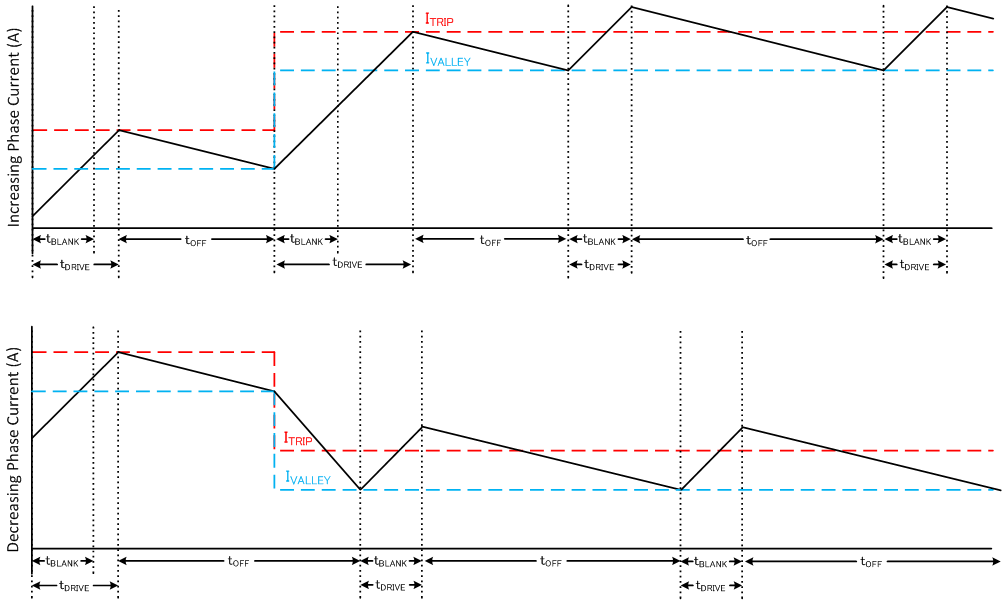SLOSEC6 August 2024 DRV8434A-Q1
PRODUCTION DATA
- 1
- 1 Features
- 2 Applications
- 3 Description
- 4 Pin Configuration and Functions
- 5 Specifications
-
6 Detailed Description
- 6.1 Overview
- 6.2 Functional Block Diagram
- 6.3
Feature Description
- 6.3.1 Stepper Motor Driver Current Ratings
- 6.3.2 PWM Motor Drivers
- 6.3.3 Microstepping Indexer
- 6.3.4 Controlling VREF with an MCU DAC
- 6.3.5 Current Regulation and Decay Mode
- 6.3.6 Charge Pump
- 6.3.7 Linear Voltage Regulators
- 6.3.8 Logic Level, Tri-Level and Quad-Level Pin Diagrams
- 6.3.9 Protection Circuits
- 6.4 Device Functional Modes
- 7 Application and Implementation
- 8 Power Supply Recommendations
- 9 Layout
- 10Device and Documentation Support
- 11Revision History
- 12Mechanical, Packaging, and Orderable Information
パッケージ・オプション
メカニカル・データ(パッケージ|ピン)
- RGE|24
サーマルパッド・メカニカル・データ
- RGE|24
発注情報
6.3.5.1 Smart tune Ripple Control
 Figure 6-5 Smart tune Ripple Control Decay Mode
Figure 6-5 Smart tune Ripple Control Decay ModeSmart tune Ripple Control operates by setting an IVALLEY level alongside the ITRIP level. When the current level reaches ITRIP, the driver enters slow decay until IVALLEY is reached. In slow decay, both low-side MOSFETs are turned on allowing the current to recirculate. In this mode, off-time varies depending on the current level and operating conditions.
The ripple control method allows tight regulation of the current level increasing motor efficiency and system performance.